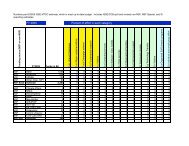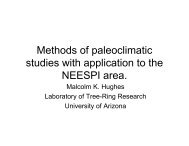Ground Truth Studies Teacher Handbook - Aspen Global Change ...
Ground Truth Studies Teacher Handbook - Aspen Global Change ...
Ground Truth Studies Teacher Handbook - Aspen Global Change ...
You also want an ePaper? Increase the reach of your titles
YUMPU automatically turns print PDFs into web optimized ePapers that Google loves.
Your Watershed’s Story<br />
Objectives<br />
Students will be able to: 1) devise and carry out interviews<br />
within the community; 2) name several natural and<br />
human activities that have changed the local watershed in<br />
living history; 3) describe the interaction between the<br />
river, its quality and the lives of people in the watershed.<br />
Method<br />
Students will design a questionnaire, interview local<br />
people, and compile the oral histories collected to<br />
establish the recent history of a river and its watershed.<br />
Students must have a firm grasp of the meaning of<br />
watershed in order to be able to interview other people.<br />
Background<br />
Anthropologists and ethnographers use interviewing as a<br />
research technique to collect oral histories: accounts of<br />
places and events that are not written, but passed on from<br />
one generation to the next verbally. Oral histories are<br />
usually the re-telling of the personal, daily lives of<br />
ordinary people, in their own words. Collecting oral<br />
histories provides students with an exciting way to forge<br />
links with people of various ages and to accumulate the<br />
wisdom of experience. The purpose of this activity is for<br />
students to gain an appreciation for the rich information<br />
contained in oral histories, and the complex ways in<br />
which watershed changes affect people’s lives. Learners<br />
more easily establish the connections between events and<br />
the context in which they occur because interviewing<br />
makes history more personal.<br />
Materials<br />
Writing materials, tape recorders, blank tapes, aerial or<br />
satellite images, topographic maps or watershed model of<br />
the local watershed.<br />
Age<br />
Grades 7 - 12<br />
Subjects<br />
Social <strong>Studies</strong>, Sociology, Anthropology,<br />
Science, Language Arts<br />
Duration<br />
At least two class periods plus time outside of<br />
class for conducting interviews<br />
Skills<br />
compiling information, designing<br />
questionnaires, interviewing<br />
Key Vocabulary<br />
anthropology, ethnography, meander, oral<br />
history, political boundary, raw materials, value<br />
judgement<br />
Procedure<br />
1. To prepare to interview older members of the<br />
community to find out what various parts of the<br />
watershed were like in years gone by, divide the<br />
learners into small groups to generate questions to be<br />
asked during interviews. Compile all questions<br />
suggested. As a large group, decide which questions<br />
to place on a questionnaire to insure that a minimum<br />
standard of similar information is sought with each<br />
interview. Interview questions might include:<br />
• How long have you lived in the area?<br />
• What were the river and the surrounding<br />
watershed like when you were my age?<br />
• What are the different uses of the river that you<br />
have witnessed?<br />
© ASPEN GLOBAL CHANGE INSTITUTE 1995 GROUND TRUTH STUDIES<br />
101


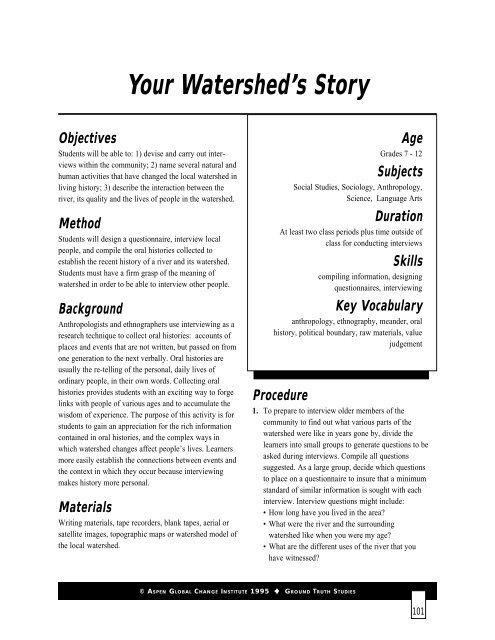
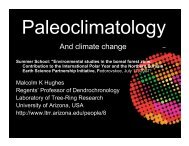


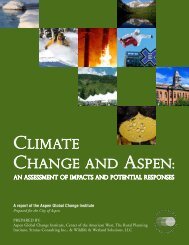

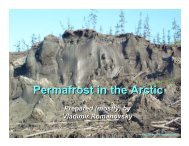
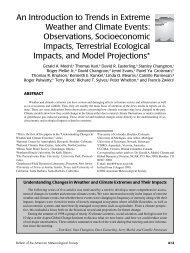
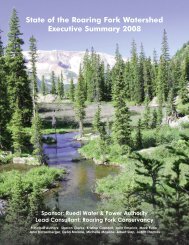
![View Powerpoint Slides [PDF]](https://img.yumpu.com/32486693/1/190x146/view-powerpoint-slides-pdf.jpg?quality=85)
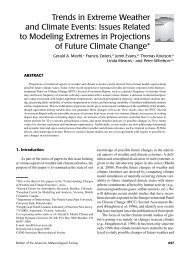

![View Powerpoint Slides [PDF]](https://img.yumpu.com/29411106/1/190x143/view-powerpoint-slides-pdf.jpg?quality=85)
